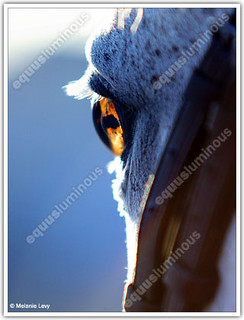A fully qualified human and equine Bowen Practitioner and a full member of the Bowen Therapists’ European Register, Lynne Barrett took the time to answer some questions regarding this therapy and her profession.
Have you always been interested in horses?
I have loved horses (and all animals) since a child. My parents thought I would grow out of it, but I never did – although it wasn’t until I was 23 that I finally got my own horse – a dream come true. I had the six year old mare (Sky) for twenty years and she was a star (and a friend), although I wish I could have the time again knowing what I know now.
When did you come to discover the benefits of Bowen Therapy?
Not until I started the “human” course – having been led there by a sequence of coincidences all pointing to Bowen. I hadn’t even had a Bowen treatment myself at that point. I was quite prepared to walk away if it was all nonsense (the idea that a treatment with such gentle moves can have such a profound effect, rebalancing and realigning the body, and treating a vast array of ailments was quite a challenge to my logical mind). When my case studies started to get better, many with long term problems, I realised it was Bowen that was making the difference.
How much of your day/week is hands on with horses?
I do a three day a week part time “day job”, I do Bowen the other two days and supplement with evenings/weekends as necessary. Sometimes I have more horses than people, and vice versa. The horses tend to be more time consuming as they involve travelling time, I could treat two people in the time it takes me to do one horse!
In this field is it possible for someone to be a full time professional, earning a livable income?
Without a doubt, my “day job” subsidises the Bowen, however, if I wasn’t working I could be out doing talks to “spread the word” and expand my business. There is plenty of work out there! How well the profession is paid, depends on the treatment charge. A Bowen appointment will take about an hour, and for the horses there is travel time and fuel costs to factor in. There are then advertising costs, insurance, membership fees for professional bodies etc.
What are the general steps taken to be able to carry out this therapy on your own horses and others?
The European School of Equine Bowen Therapy (ESEBT) insists that equine practitioners are trained as human practitioners first and foremost (which is a year of training), and then it takes a year to do the Equine Training (with a minimum of 20 case studies for both courses). The ESEBT certificate enables you to carry out Bowen on other people’s horses with veterinary consent and appropriate insurance.
Any advice for those interested in pursuing Bowen Therapy?
Locate a therapist in their area and talk to them about the courses available. Those interested in the horse course could start with the suggested reading list on the Equine Bowen Therapy website. And go and experience a treatment for them and their horse!
Is there anything else with horses you’d love to learn about or try?
Anything and everything that promotes their wellbeing and that is “for the good of the horse” . My equine reading pile is always stacked high!
I am currently implementing the concept of “natural boarding” for my 2 horses, to keep them healthy and happy, and they have responded brilliantly. We take so much for granted with our horses – Bowen has really made me open my eyes (and my heart) and re-evaluate everything.
Favourite horse memory?
All the cross country rounds I did with Sky whilst BHS eventing (and one round which I’d rather forget!).
Future goals?
Just to keep learning and growing as a therapist. The more you learn, the more you realise there is to learn! There is a big difference between 10 years of experience and 1 year of experience repeated 10 times.
Best thing about your sport/profession?
To be allowed to work on horses in the first place. To be able to help them is an incredibly rewarding and humbling experience.
“Live long, ride well and win to your hearts content.”
tag: course, travel, bowen therapy, equine massage, horse business, qualification

